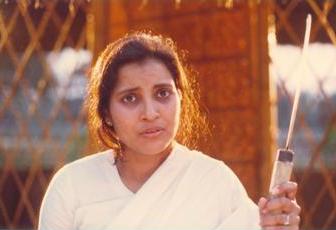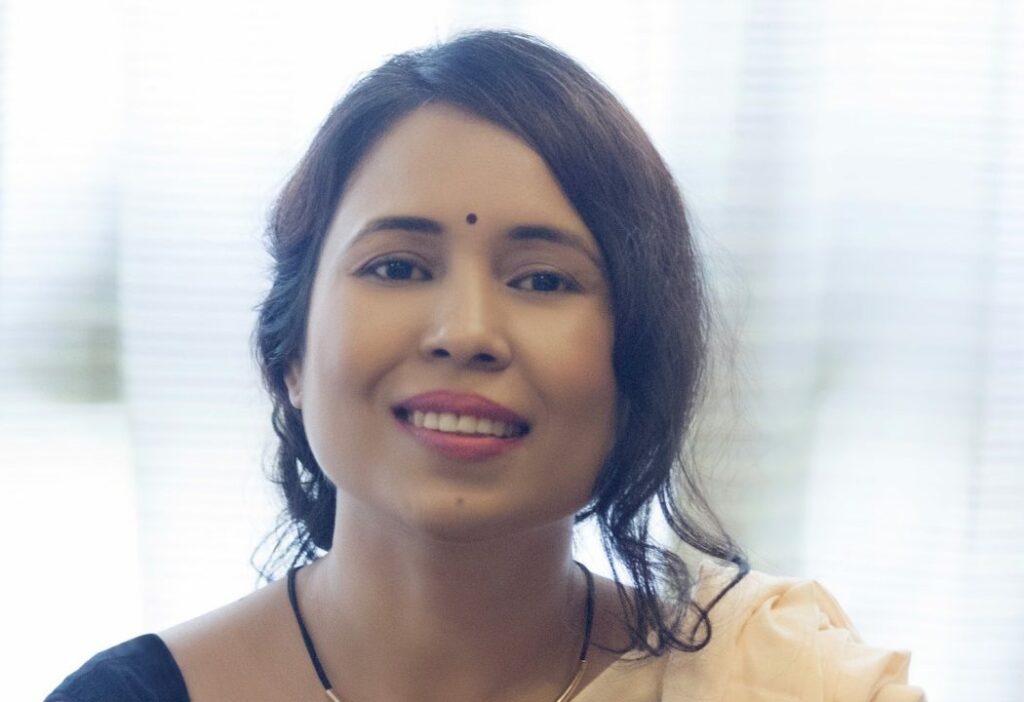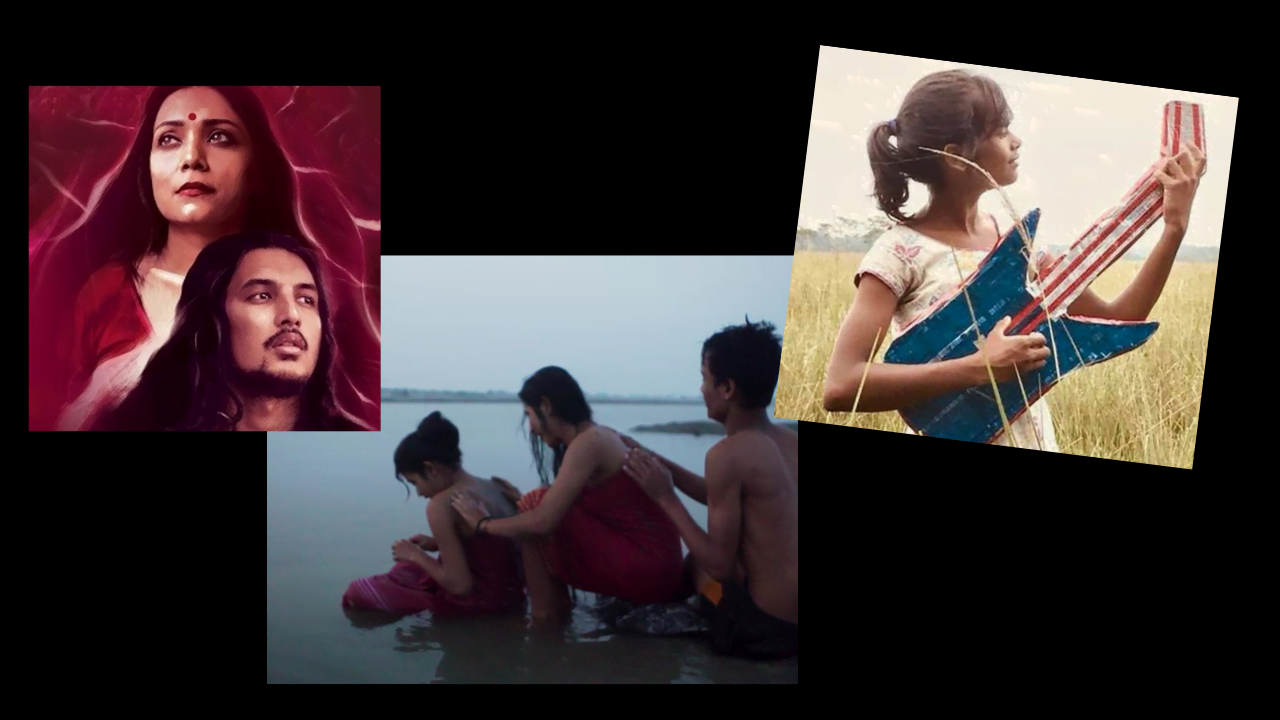Assamese regional films always ensured to pour cultural richness through their narratives, music and representation through visual narratives. The cinema industry of Assam was formed with the lineage starting from Joymoti directed by Jyoti Prasad Agarwala. In the ’70s and ’80s, this film also led to the growth of films with visually strong narration moving away from the conventional film on entertainment. These films focused more on the richness of culture, politics and the strong use of the visual medium to bring awareness and address different issues of social context through cinema.
Cinema is an expensive trait and one of the strongest mediums to visually represent and expose social reality. This is how the Assamese film wave found its course during the ’60s along with addressing social and cultural discourse. The portrayal of gender roles in Assamese regional cinema has been an essential aspect of the state’s affair of social, cultural and ethical sustainability.
There was also a constant shift seen in the cinema history of Assam with the region always being under the radar due to insurgency. Whereas, many films have actually put light on the serious issues faced by the state for 3 decades of separatism, militancy and insurgency and its conflicting position within its own neighbourhood states. There were also films which are believed to have attempted to dilute the entire cause through their productions.
However, the cause of filmmaking to understand and address social concerns through creative mediums has overall been successful throughout history.
Assamese regional cinema and its growing history
Most of the old literature talks about the Assamese regional film industry heading back to the 1930s when the first film Joymoti was produced. Joymoti was based on the life of an Ahom queen of the same name directed by Agarwala. The film was an instant hit and also the first film to have been produced all over Assam.
In the 1960s and 1970s, a noticeable shift was seen in the techniques of narrative and storytelling. Some of the films also adapted to the storytelling of folk culture and represent historical incidents like Lachit Borphukan and Aranya. These films not only spoke strongly about history but also touched upon the lens of gender and gender roles.

Jahnu Barua, who is a renowned name in the regional film industry of Assam made a solid effort of bringing social interest into parallel cinema. Though, regional cinema has also seen its mighty struggle to keep itself alive due to a lack of knowledge, and support from the government or bureaucrats now and then. However, his films mostly portrayed strong female characters right from the first film Aparoopa.
Assamese regional cinema and gender roles
Assamese regional cinema has always been influenced by the region’s patriarchal society, where men hold a dominant position in both the public and private spheres. The portrayal of gender roles in Assamese regional cinema has often been stereotypical, where women are depicted as passive, submissive, and subservient to men.
In the early days of Assamese regional cinema, women were mostly portrayed as objects of desire or passive characters who played a secondary role to the male protagonist. Female characters were often portrayed as damsels in distress who needed to be rescued by the male hero. However, over the years, there has been a significant shift in the portrayal of female characters in Assamese regional cinema.

The 1980s saw a significant change in the portrayal of female characters in Assamese regional cinema. The emergence of female directors and screenwriters brought a fresh perspective to the narrative, and women’s issues became an essential part of the discourse. Films such as Rati Chakravyuh, Xagoroloi Bohudoor, and Firingoti portrayed women as strong, independent, and capable of making their own decisions. These films also highlighted the challenges and struggles faced by women in a patriarchal society.
In recent years, Assamese regional cinema has continued to explore the nuances of gender roles and break the stereotypes through cinema and creative visual storytelling. Films such as Village Rockstars, Bulbul Can Sing, and Aamis have challenged the traditional notions of gender roles and explored themes such as same-sex relationships, female desire, and the intersection of gender and class.
In the 1990s and 2000s, Assamese regional cinema saw the emergence of a new wave of filmmakers who challenged traditional gender roles and stereotypes. Films such as Hiya Diya Niya, Ramdhenu, and Mon Jaai explored the complexities of relationships and portrayed women as multi-dimensional characters with their desires and aspirations.

In recent years, Assamese regional cinema has continued to explore the nuances of gender roles and break the stereotypes through cinema and creative visual storytelling. Films such as Village Rockstars, Bulbul Can Sing, and Aamis have challenged the traditional notions of gender roles and explored themes such as same-sex relationships, female desire, and the intersection of gender and class.
Aamis, directed by Bhaskar Hazarika, explores the intersection of gender and desire. The film tells the story of a young woman named Nirmali, who develops a strange and forbidden relationship with a married man. The film explores the complexities of desire and the societal norms restricting women’s agency and autonomy. Aamis was also critically acclaimed and won several awards, including the Best Director Award at the Singapore International Film Festival.
Challenges women filmmakers face
Assamese regional cinema has seen a new wave of films in recent years that explore the complexities of gender roles and stereotypes. These films not only challenge the traditional notions of gender but also provide a platform for the voices of marginalised communities, including women, the LGBTQ+ community, and the working class. One such film is Village Rockstars, directed by Rima Das.
The film also introduces us to the conventional and old method of storytelling by reducing the use of dialogue and furthering the plot with the use of the camera.

The film tells the story of a young girl named Dhunu, who dreams of owning a guitar and forming a rock band with her friends. The film explores the challenges faced by a young girl growing up in a patriarchal society and her struggle to break free from gender stereotypes. Village Rockstars was not only critically acclaimed but also won several national and international awards, including the National Film Award for Best Feature Film.
Another film that explores the complexities of gender and sexuality is Bulbul Can Sing, also directed by Rima Das. The film tells the story of a young girl named Bulbul, who grows up in a remote village in Assam and discovers her sexuality in a conservative and homophobic society. The film explores the challenges faced by a young girl coming to terms with her sexuality and the discrimination faced by the LGBTQ+ community in India. Bulbul Can Sing was also critically acclaimed and won several awards, including the Best Asian Film Award at the Pingyao International Film Festival.
Paradigm shift
Ever since its inception, in 1930, Assamese regional film has explored and crossed diverse paths throughout its intersection with respect to caste, class, gender, race, sexuality and so on. The emergence of female directors and screenwriters has brought a fresh perspective to the discourse, and women’s issues have become an integral part of the narrative.

New films such as Village Rockstars, Bulbul Can Sing, and Aamis have challenged the traditional notions of gender and explored themes such as same-sex relationships, female desire, and the intersection of gender and class. These films not only provide a platform for marginalised communities but also challenge the societal norms that restrict women’s agency and autonomy.
As the industry continues to evolve, it is essential to give space to diverse voices and perspectives and ensure that the discourse remains relevant and representative of the state’s social and cultural values.
About the author(s)
Ritwik is a northeastern Bahujan who has been a journalist for 2 years. He has also been a UN fellow for the year 2021-22. He has worked on several papers like writing about reportage in broadcast media on women impacted by floods in the northeast. He is currently working on queer representation in the regional press of Assam. Most of the work focused on gender, sexuality, intersectionality, climate change, marginalised and vulnerable communities and data journalism.
He has been a contributing writer at Youth ki Awaaz, Feminism in India and Swaddle for the last 4 years.





